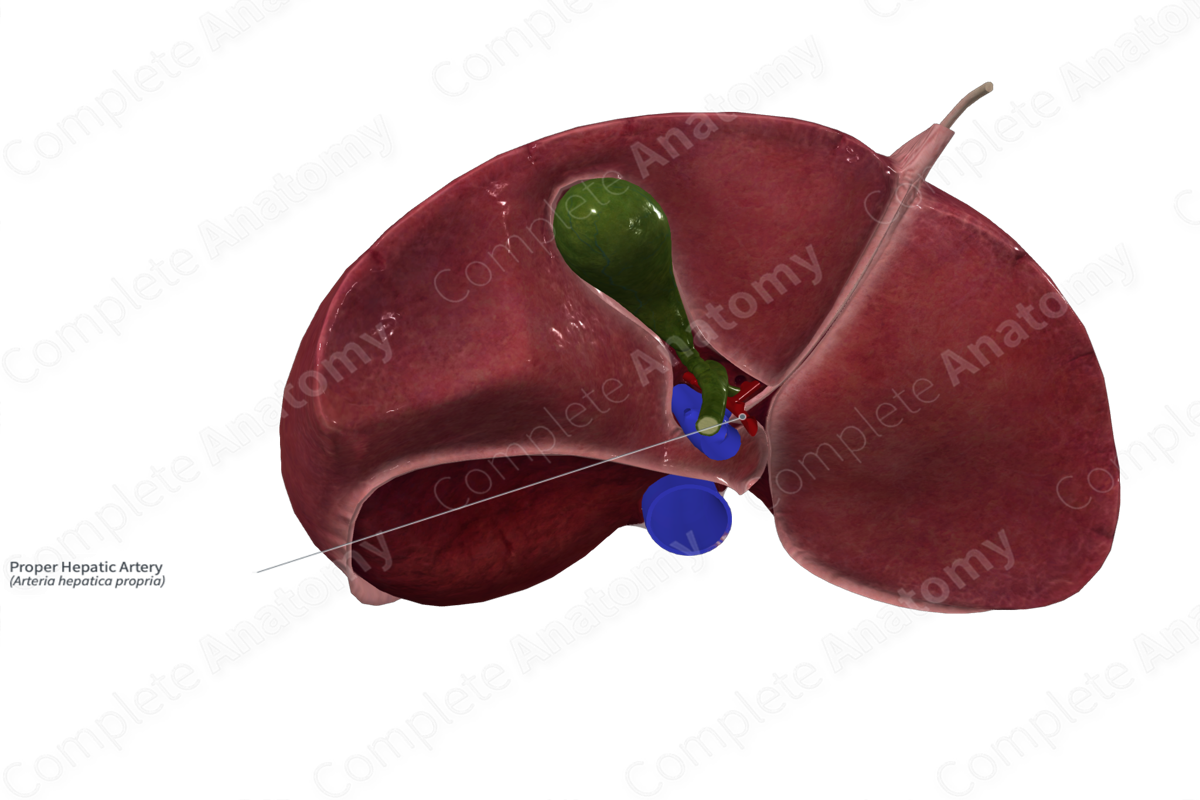
Quick Facts
Origin: Common hepatic artery.
Course: Passes superiorly on the right towards the porta hepatis of the liver.
Branches: Right and left hepatic arteries, often the right gastric artery.
Supplied Structures: Liver, gallbladder, pyloric portion of the stomach (potentially).
Origin
The proper hepatic artery is one of the two terminal branches of the common hepatic artery, the other being the gastroduodenal artery
Course
The proper hepatic artery passes superiorly within the free edge of the hepatoduodenal ligament. Here it is one of the components of the portal triad (taking the anterior, to the left position). If it gives the right gastric branch (the origin of which is quite variable, but is often the proper hepatic artery) it usually emerges from the proximal part of the proper hepatic artery. The artery bifurcates at a variable distance between its origin and the porta hepatis on the inferior surface of the liver. The branch point most commonly occurs along the superior third of this distance just before the branches enter the parenchyma of the liver.
Branches
The proper hepatic artery ends in two terminal branches, right and left hepatic arteries. In over 50% of instances, the right gastric also emerges from the proper hepatic artery (Eckmann and Krahn, 1984), and when it does it is usually from the proximal portion, close to the bifurcation of the common hepatic artery.
Supplied Structures
The proper hepatic artery supplies the liver, gallbladder, and potentially the pyloric portion of the stomach if the right gastric artery emerges distal to the bifurcation of the common hepatic artery.
References
Eckmann, I. and Krahn, V. (1984) '[Frequency of different sites of origin of the right gastric artery]', Anat Anz, 155(1-5), pp. 65-70.
Learn more about this topic from other Elsevier products





